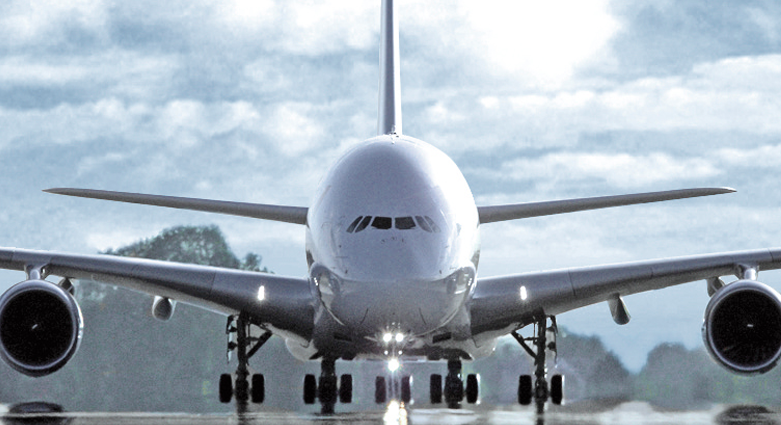First ever Airbus ‘Superjumbo’ jet, the world's biggest passenger plane, is put into storage
The A380, the world’s biggest passenger jet, is looking for a secondhand market and new orders

Your support helps us to tell the story
From reproductive rights to climate change to Big Tech, The Independent is on the ground when the story is developing. Whether it's investigating the financials of Elon Musk's pro-Trump PAC or producing our latest documentary, 'The A Word', which shines a light on the American women fighting for reproductive rights, we know how important it is to parse out the facts from the messaging.
At such a critical moment in US history, we need reporters on the ground. Your donation allows us to keep sending journalists to speak to both sides of the story.
The Independent is trusted by Americans across the entire political spectrum. And unlike many other quality news outlets, we choose not to lock Americans out of our reporting and analysis with paywalls. We believe quality journalism should be available to everyone, paid for by those who can afford it.
Your support makes all the difference.As Airbus battles for a fresh order for its A380 plane, the first double-deck Superjumbo has been put into storage.
Singapore Airlines was the launch customer for the A380 a decade ago. The first aircraft, code 9V-SKA, entered service between Singapore and Sydney on 25 August 2007, under the specially created flight number SQ380.
But that flagship plane was grounded in June. The jet has now been taken back to Europe by its owner, the leasing company Dr Peters Group of Dortmund. The plane has been painted white and flown to Tarbes Lourdes Pyrénées airport in South-west France.
The airport is a Ryanair base, close to Toulouse where the Airbus A380 was designed and built. Tarmac Aerosave, which operates the long-term airport parking facility, is part-owned by Airbus. The firm says it “provides the best one-stop-shop solution to your aircraft needs … enabling the residual value of the aircraft to be maintained during the entire storage phase.”
Airbus says of its biggest plane: “As the world’s most comfortable, smooth and quiet airplane, no other travelling experience comes close. It is the passenger’s favourite.”
While the A380 is certified for more than 800 passengers, airlines typically equip it with around 500 seats.
But the plane has always struggled to attract orders. When the entry into service was delayed, a number of airlines, including Virgin Atlantic, cancelled orders. Just 216 have been delivered with around 100 more on order – about a fifth of the total for the Boeing 747 Jumbo.
The more modern Airbus A350 has attracted far more interest from airlines. While it has a lower capacity, the twin-jet is a more efficient aircraft and is proving popular with passengers on Cathay Pacific, Ethiopian Airlines, Qatar Airways and Finnair.
Almost half the Superjumbos in service worldwide fly for Emirates, which recently took delivery of its hundredth A380. The Dubai-based airline is known to be considering an upgraded version of the jet.
The A380plus would be capable of carrying 80 more passengers, partly by adding an extra seat to each row in economy and premium economy. While the A380 economy section is only 10 abreast at present, Airbus says an 11th seat can be added to create a “3-5-3” configuration.
But the deal is stalled by a dispute over whether Airbus will guarantee to keep the production line open for another decade.
The Dr Peters Group owns a further three A380s still flying for Singapore Airlines, plus five more in service with Air France.
Hi-Fly, a Portuguese airline that provides “wet-lease” planes to cover for other carriers – including the recent Monarch airlift – is known to be interested in the A380. But there is concern about the “first off the production line” editions, such as the plane on the ground in Lourdes. Often they are heavier than later aircraft, with other flaws.
An expert in aircraft values described early planes of any model as “virtually ‘R&D’ aircraft”, with the maker “battling to smooth out the initial kinks of their new kit and improve the latter examples coming off the line”.
Join our commenting forum
Join thought-provoking conversations, follow other Independent readers and see their replies
Comments